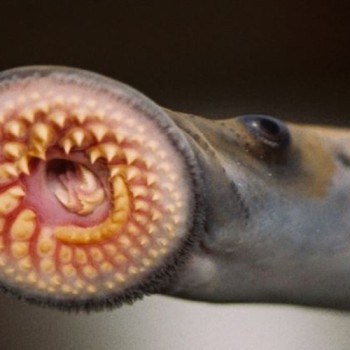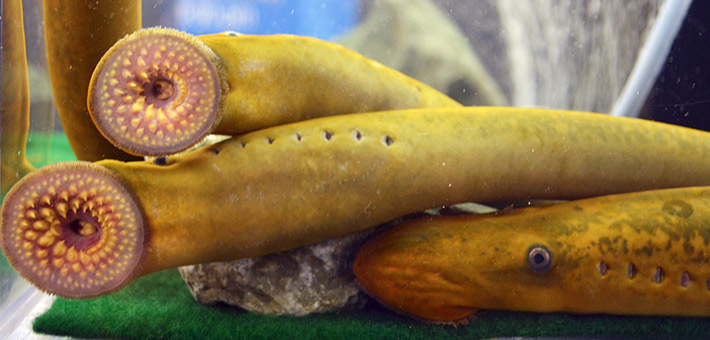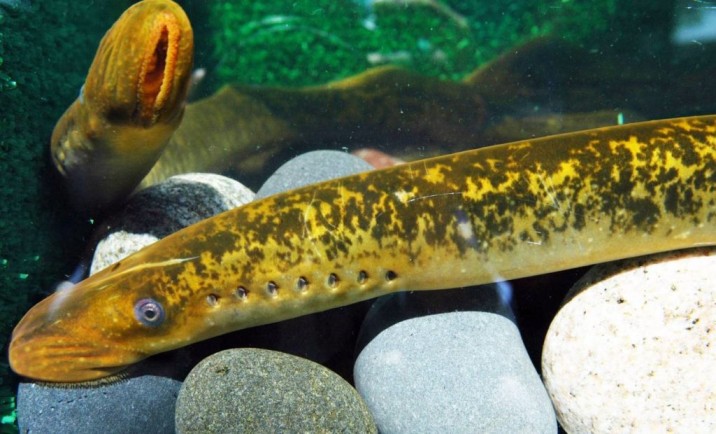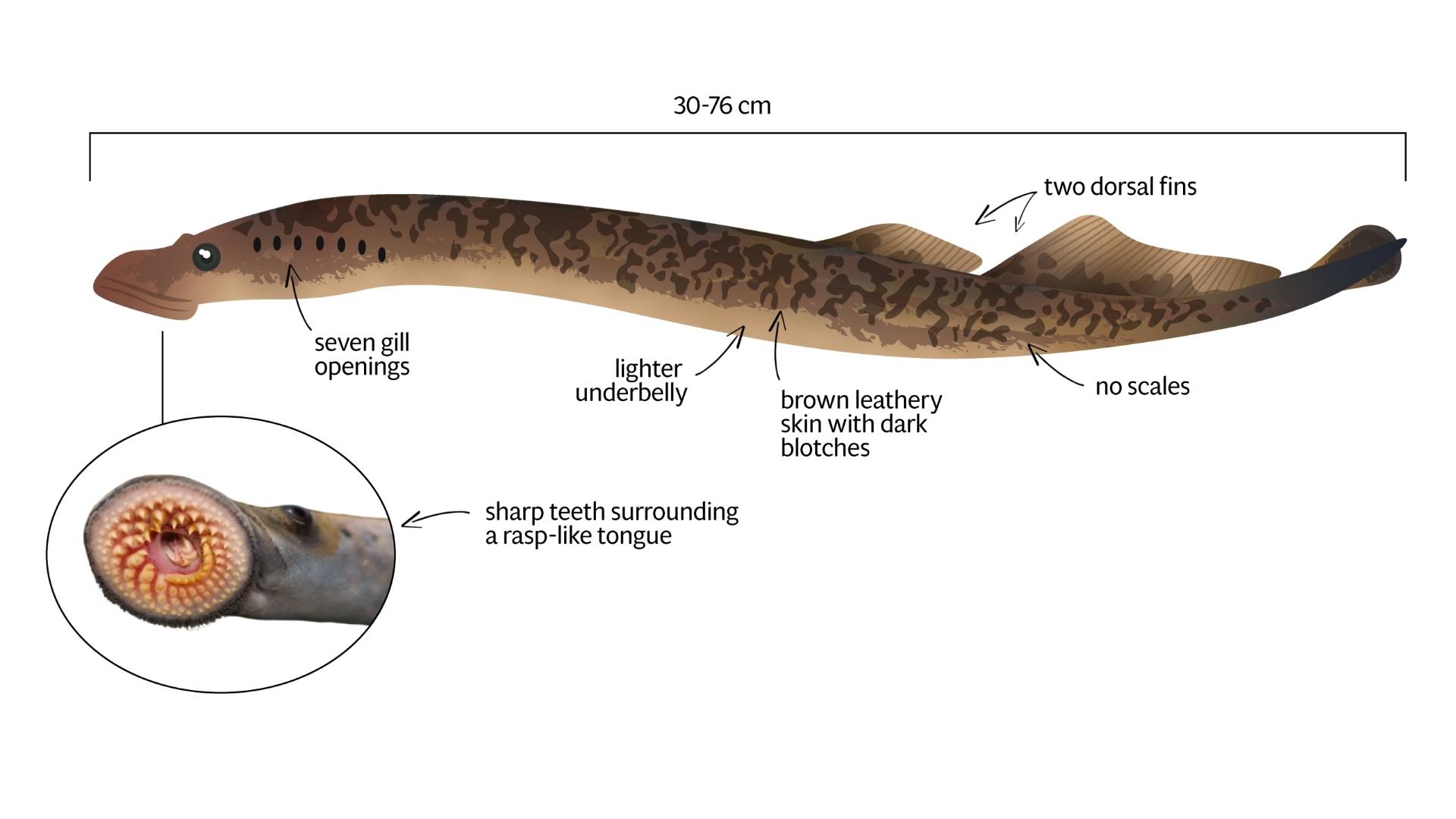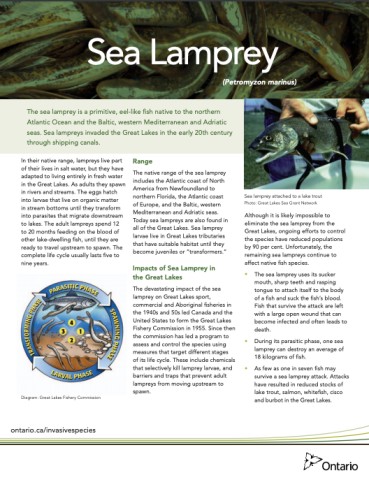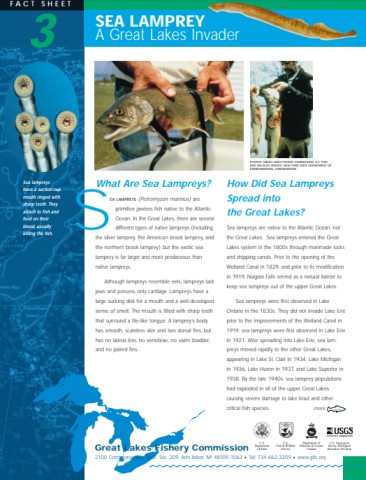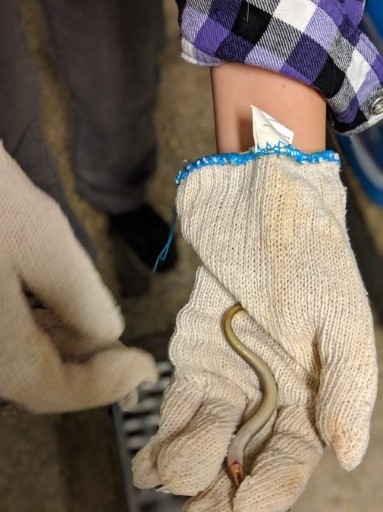
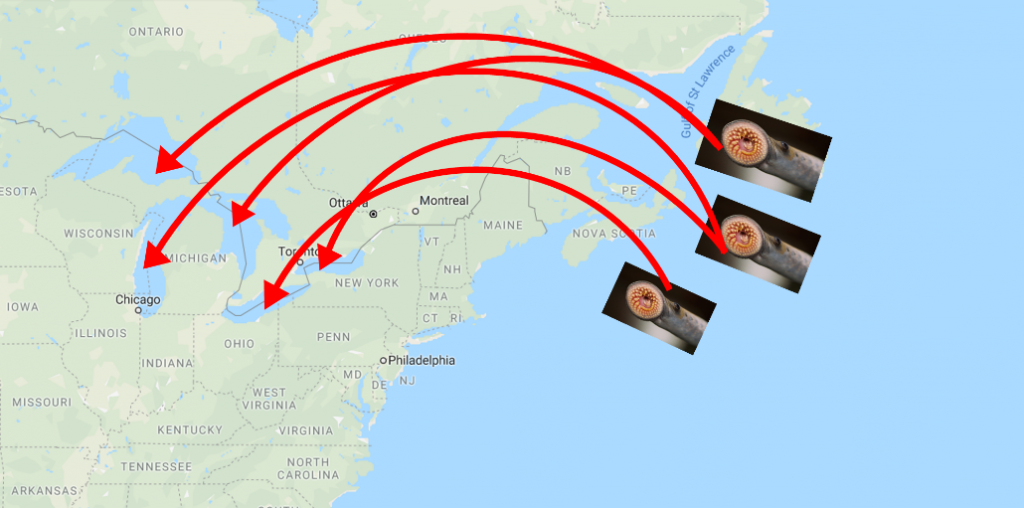
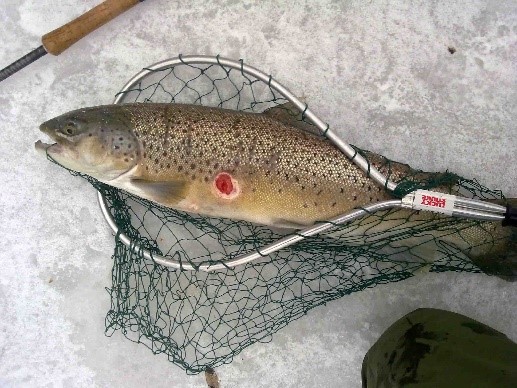
Sea lamprey are native to the Northern Atlantic Ocean and are actually a delicacy in some European countries, but this is not the case everywhere… Sea lamprey invaded the Great Lakes in 1930s and are now adapted to live their whole life in freshwater in Great Lakes. Sea lamprey are by far the most destructive of all invading species in the Great Lakes and they are currently present in all Great Lakes.
While there is more than one type of lamprey in the Great Lakes (including some native species), sea lamprey are much bigger and much more abundant than any other! They are known to be an aggressive and resilient invasive species. Sea lamprey are a parasite, feeding on the blood and inner fluids of their prey. Sea lamprey literally suck the life out of their host fish, by using tooth-filled, suction cup mouth and file a hole through the fish’s scales and skin with a razor-sharp tongue. The sea lamprey prey on many important fish such as trout and salmon, which has depleted many native stocks for fisheries, negatively affecting the $7 billion Great Lakes fishery industry. The average sea lamprey kills 40 pounds of fish every year, they do this by leaving bite wounds that become infected and can lead to disease.
The sea lamprey’s life starts as larvae in a small river or stream where they stay as immobile filter-feeders (3+ years). As they grow larger, they emerge from the streambed and head down stream into open water. Sea lamprey go through a stage of metamorphosis (like a butterfly) which changes large components of their bodies, including allowing them live in sea water (salt water) in their native range. This is also where they begin their parasitic life stage in open water, feeding on anything they can attach to (mostly large fish), this lasts about a year (12-18 months). When sea lamprey are ready to spawn, they stop eating and move upstream to spawn and die, since many sea lamprey are in rivers or streams at the same time during spawning and larvae stages, this is most often where control techniques are used.

Scientists currently use a variety of different techniques to control lamprey (traps, barriers, and chemicals). Traps and barriers are used to block spawning lamprey from moving upriver to spawn or for physically removing lamprey. The problem with both are that they affect non-target species (like the creek chub and white suckers) that also swim upstream during the same time of year (spring) but some traps are designed specifically to catch sea lamprey. Lampricide, a pesticide specific to lamprey, is also used, this is a chemical dumped into the water during or after lamprey spawning, that kills the babies of the lamprey before they grow up into their most devastating life stage. When used individually, none of the control methods work enough to keep the sea lamprey in check. This is because one sea lamprey female makes over a thousand eggs, which have high survival rates (60,000 eggs w/ 90% survival). The best control method is using multiple methods to increase the efficiency. For example, traps used with pheromones (smells) that will either attract or repel the sea lamprey into traps, increasing the amount caught.
Industry professionals, non-profit organizations, and government agencies have come together to create a successful control program and will continue to work together to improve the program efficacy on controlling this invasive species!
You can learn more about sea lamprey by visiting our species profile, here.

